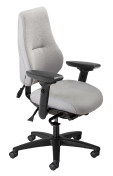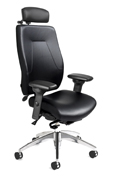COVID-19 happened. You were sent to work from home, despite not having an ergonomically sound workstation.
You asked yourself where am I going to work, then landed somewhere plunked on your bed or sofa, tethered to the kitchen, dining room or coffee table, maybe even bounced around all of the above trying to get comfortable.
Looking to Google for tips on setting up a home office, you cobbled together a PBB setup (pillow/box/books). That’s the pillow on the chair or behind your back or both and a box or pile of books under your laptop or under your feet. Sound familiar? Uncomfortable and possibly in pain, you might have made an impulse purchase of an ‘ergonomic’ this or that, maybe even an ‘ergonomic’ chair
As reported in the National Post, a DART & maru/Blue polled Canadians working at home and found:
- 52% want better seating
- 48% want a better desk and working space
- 19% better lighting
The future remains uncertain. If remote work wasn’t on your employer’s radar pre-COVID-19, the airwaves suggest it could very well be part of the new normal – your new normal – for months, years or even permanent.
Amidst this uncertainty, one thing hasn’t changed – what the human body needs. You need to maintain good alignment as you move through various postures that support your muscular and skeletal systems. As a result, you avoid strain and overexertion while working.
The long-term benefits of accommodating your needs are comfort, elimination or reduction of injuries and chronic diseases. In particular, chronic diseases such as heart disease, type 2 diabetes, various cancers, obesity and decreased mortality.
Enter the long game. Time to deliberately invest in an ergonomically sound workstation that yields benefits today and for years to come.








